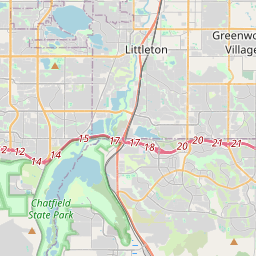Littleton, Colorado Post Office
Historical marker location:






National Register of Historic Places
1775: The Second Continental Congress establishes the Constitutional Post to provide postal services in the thirteen American colonies. Benjamin Franklin is appointed as the first Postmaster General.
1792: The Postal Service Act is passed, officially establishing the United States Postal Service as a federal agency. It sets the foundation for the organization and regulation of postal operations.
1847: The introduction of prepaid adhesive postage stamps revolutionizes mail delivery, simplifying the process and promoting efficiency.
1860: The Pony Express, a fast mail delivery service, is launched to transport mail between the eastern and western regions of the United States. It becomes famous for its daring riders and swift delivery.
1863: Free city delivery is introduced, allowing mail to be delivered directly to urban households and businesses rather than being picked up from local post offices.
1864: The Postal Money Order system is established, providing a secure way for people to send money through the mail.
1896: Rural Free Delivery (RFD) is implemented, bringing mail delivery to rural areas for the first time. This service significantly improves communication and connects rural communities to the rest of the country.
1971: The United States Postal Service is reorganized as an independent agency within the federal government, operating as the USPS. It is no longer directly controlled by the Postmaster General.
1974: The USPS introduces the ZIP (Zone Improvement Plan) Code system, which assigns unique codes to geographic areas to improve mail sorting and delivery efficiency.
1997: The USPS launches its website, usps.com, providing online access to postal services, tracking, and information.
2001: Following the 9/11 terrorist attacks, the USPS faces security challenges and undergoes significant changes to enhance mail screening and protection.
2013: The USPS announces the end of Saturday mail delivery for regular letters and reduces delivery to five days a week.
Present: The USPS continues to be a vital service, handling billions of pieces of mail annually and adapting to changes in technology, communication, and the shipping industry. It plays a crucial role in connecting people, facilitating commerce, and serving as a backbone of the American communication infrastructure.
This timeline provides an overview of key milestones in the history of the USPS, which has played a crucial role in facilitating communication and connecting communities throughout the United States for over two centuries.
Colorado is home to many famous ski resorts, including Vail, Breckenridge, and Aspen. Skiing was first introduced to the state in the 1930s, and has since become a major part of Colorado's tourism industry.
In 1858, gold was discovered in the South Platte River in what is now Arapahoe County. This led to a significant influx of prospectors and settlers, and the establishment of several mining camps. The county was officially established in 1861, just a few years before Colorado achieved statehood.
During this time, Arapahoe County became an important center for trade and cattle ranching. The transcontinental railroad also brought further growth and development to the area. In the late 19th century, the county's economy diversified with the establishment of industries such as agriculture, manufacturing, and services.
Over the years, Arapahoe County has experienced significant population growth and urbanization. Cities such as Littleton, Englewood, and Aurora have emerged as prominent economic and cultural hubs. Today, the county is known for its high quality of life, outdoor recreational opportunities, diverse communities, and thriving economy. Arapahoe County continues to evolve and attract new residents and businesses, while also preserving its rich history and natural beauty.
Arapahoe County Timeline
This timeline provides a concise overview of the key events in the history of Arapahoe County, Colorado.
- 1855 - Arapahoe County is established as one of the original 17 counties of the Colorado Territory.
- 1859 - Gold is discovered in Arapahoe County, leading to a population boom.
- 1861 - The Colorado Territory is divided, and Arapahoe County becomes part of the newly created Jefferson Territory.
- 1862 - The Colorado Territory is reorganized, and Arapahoe County is reestablished.
- 1879 - Denver is separated from Arapahoe County to form its own independent city and county.
- 1902 - The northeastern part of Arapahoe County becomes part of the new Adams County.
- 1965 - Arapahoe County merges with South Arapahoe County to form the present-day Arapahoe County.